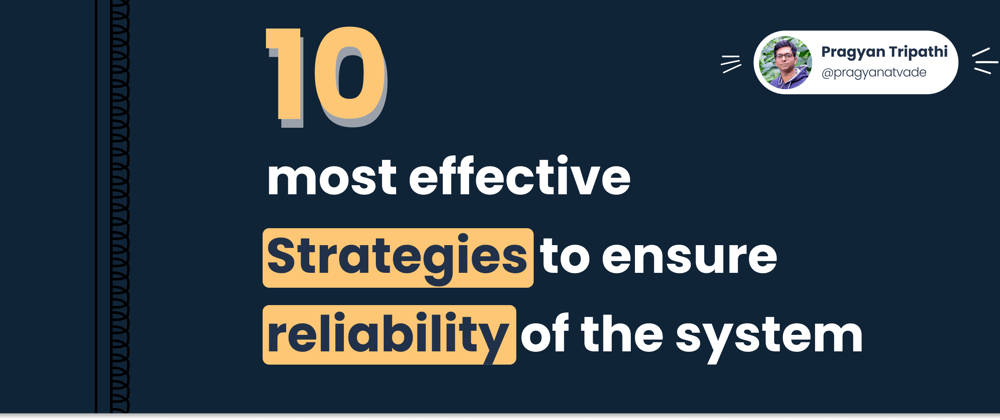Ensuring the reliability of a system is crucial for maintaining uptime, performance, and overall satisfaction for users.
Here are 10 of the most effective strategies for maintaining the reliability of your system:
1. Use boring technologies and architectures:
Choose technology that have a track record of reliability, and are simpler to manage rather than relying on untested or experimental fancy tools in the market.
2. Continuous Monitoring:
It helps identify potential issues before they become critical problems. Use a variety of monitoring tools and techniques, and measure them using metrics, logs, and tracing.
3. Test and validate the system:
Test and validate the system regularly to ensure that it is functioning as intended and meeting your performance and availability targets. Use automated testing tools.
4. Implement a robust error-handling strategy:
It minimizes the impact of failures on the system. Techniques like circuit breakers and retries ensure that the system continues functioning even when errors occur.
5. Use redundancy and failover:
This ensures that the system remains available even when individual components fail. This includes having redundant servers and load balancers.
6. Automate deployment and management:
Use tools like Terraform or Pulumi for infrastructure as code and CI/CD. This will help reduce the risk of human error and ensure the system is consistently configured and maintained.
7. Perform regular maintenance and updates:
Regularly perform maintenance and updates to the system to ensure it remains stable and secure. It includes applying security patches, upgrading software, and replacing hardware as needed.
8. Use a service mesh:
Use a service mesh to manage communication between services in a distributed system. This will improve the reliability and performance of the system by providing features such as automatic retries and circuit breakers.
9. Implement a disaster recovery plan:
Develop and implement a disaster recovery plan to ensure that the system can be quickly restored in the event of a major outage. This should include procedures for backing up data, restoring services, & communicating with stakeholders.
10. Continuous Improvement:
Review and improve your processes and practices. It includes conducting regular reviews, implementing new technologies, and seeking feedback from stakeholders to identify areas for improvement.
Whether you're a system administrator, a developer, or a manager, these 10 techniques will help keep your system running smoothly and consistently.
Thanks for reading this.
If you have an idea and want to build your product around it, schedule a call with me.
If you want to learn more about DevOps and Backend space, follow me.
If you want to connect, reach out to me on Twitter and LinkedIn.




















